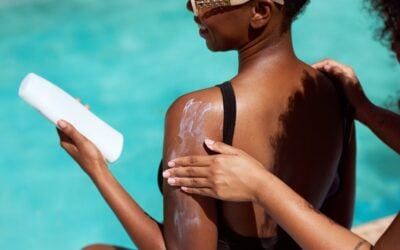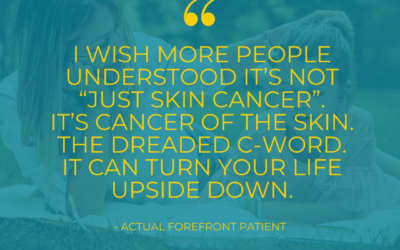
Not all spring break vacations are on the beach. If you are taking a ski vacation this Spring Break, you have most likely thought of just about everything–but take a few minutes to review some information to protect your skin!
Don’t Skimp on Sunscreen
You can sunburn on a mountaintop just as easily as you can on a beach. Sunscreen is important even in the dead of winter, and it’s even more important when skiing in the spring. When you’re hitting the slopes, you’re particularly vulnerable to increased radiation due to reflection and altitude and decreased sunscreen performance due to the wind.
- Reflection: Because white is reflective, you end up get a double dose of radiation – directly from the sun and bouncing off the snow.
- Altitude: The further away from sea level you get, the greater your exposure to UV rays. For every 1,000 feet above sea level you climb, UV exposure increases 8-10 percent.
- Wind: Coupled with cold temperatures and abrasive ice particles, wind wears away sunscreen, making more frequent reapplication necessary. Windburn can be just as irritating and damaging as sunburn, so general skin protection is good policy.
Protect Yourself From Frostbite
Although it is incredibly unusual in everyday life, participating in outdoor winter sports like skiing can increase your chances of frostbite. Frostbite happens when your skin is exposed to extreme temperatures, causing your body to go into self-preservation mode. Blood vessels in your extremities constrict to better preserve your core temperatures. With prolonged exposure, those constricted blood vessels begin to die. Depending on the severity of exposure, this can cause an uncomfortable stinging sensation and discoloration in mild cases to permanent loss of feeling to amputation when severe. For more information on identifying and preventing frostbite see our post “How to Tell if You Have Frostbite (And What to Do About It).”
Moisturizing Is Very Important
The cold, dry mountain air makes proper hydration a chore for even the healthiest skin. The result is very itchy, irritating, and unsightly dry skin. After you’ve hung up your skis for the day, help it heal with some much-needed moisture.
- Texture: Opt for a balm or cream rather than a lotion. They contain less alcohol (a drying agent), last longer, and penetrate deeper into the skin.
- Additives: Masking agents, found in both scented and unscented lotions and body washes, can further dry out the skin. Make sure your products are fragrance-free.
- Replenish: After showering down, be sure to moisturize within 3 minutes toweling off. The process of bathing strips your skin of its natural oils, so they need to be replenished as quickly as possible.
- Hydration: Drink plenty of water and avoid alcohol to keep yourself hydrated from the inside.
Your Local Skin Experts at Forefront Dermatology are Here to Help
Establishing a relationship with a board-certified dermatologist is an important step you should take to keep your skin healthy, especially if you suffer from an itchy, painful, or irritating skin condition. If you or a family member have a skin concern or would like to schedule a consult, find the Forefront dermatologist nearest you to schedule an appointment or to learn more.





